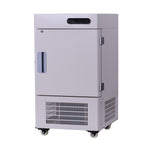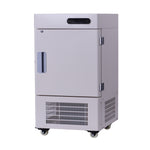You have no items in your shopping cart.
Correctly balancing tubes is critical for the efficient operation and safety of the laboratory centrifuge machine. You risk ruining the device or establishing a hazardous condition if those tubes are not perfectly adjusted. Even though a minor imbalance does not cause significant problems, it can still have a detrimental effect on the sample quality and separation process.
Centrifuges are essential in labs, but you should use them well to produce the best possible results. While operating a centrifuge, the most valuable aspects specialists do is balancing the rotor.
Balancing the centrifuge features isn't challenging; there are a few reasons that you should ensure the machine is balanced correctly.
Prevent Breakages
Balance is among the most critical aspects of your centrifuge. The devices rotate at extraordinarily high velocities to separate particles. In addition, an unbalanced tool will not function at maximum efficiency. Therefore, note that an unstable machine is hazardous! A centrifuge spins at thousands of rpm when in operation. At such speed, even several grams of disequilibrium can be dangerous.
Rotors: Failure to balance the machine will lead to rotor fragments flung outward explosively because the device is most likely rotating at a very high speed. The rotor may become uneven from the spin shaft with time. Once you first install the spinning rotor, please follow the installation instructions in the user handbook and check carefully for any imbalances. Inspect the rotor for any misalignments concern regularly and make any necessary corrections.
Centrifuge bowls tend to wear out with time, and when those wear indicators worsen, bowl balance becomes essential.
Centrifuge system: The most prevalent reason for centrifuge failure is operating a high-speed machine with an improperly loaded rotor. Loading it without balance makes the parts in motion shake uncontrollably. At best, it means that the bearings and motor will wear out faster. In the worst-case scenario, it threatens an explosive and sudden failure of the rotor or engine, as well as catastrophic injury to lab staff.
Overdriving causes fundamental resonances at greater and higher energy over time. It ultimately causes it to break apart as the velocities involved surpass the structural strength of the material used in constructing centrifuges.
It's for this reason that the high-speed centrifuges are more significant than the washing machine and heavy. And, keep in mind that the rotors' cavity is heavily armored enough to retain the rotor fragments.
Safe Operation
It is vital to load your centrifuge properly before beginning it properly. The spinner must be balanced to avoid possible harm to the equipment and to ensure safe operation. An imbalanced centrifuge could cause substantial damage and hurt the operator as well as other laboratory staff. At exceptionally high rotation speed, the overall weight of every tube must be as nearest as practicable.
It is best to balance weights to the closest 0.1 gram, and it's critical to equalize tubes by capacity rather than volume. For example, placing different liquids with different density but the same volume across from each other will still result in imbalance.
Durability
Centrifuges are powerful, and sometimes even massive devices, and they run consistently and straightforwardly. Keep in mind that centrifuges are made to last; however, they will eventually get to the end of their life like any other equipment. Inappropriate loading can shorten the rotor lifetime, and excessive, uncontrolled vibration can irreversibly damage the centrifuge machine.
More significantly, an unbalanced load might cause injury. In the worst-case scenario, instability can result in a rotor accident. When using a centrifuge with numerous buckets, you may need to utilize a few samples. It is a bit tempting to leave out the unfilled opposing buckets. On the other hand, operating without buckets is not an excellent idea because it could damage your rotor and potentially lead to a catastrophic failure.
Maintenance
Centrifuges are complex pieces of machinery that require special attention and maintenance for proper functioning. Once you acquire a new machine, follow through the user handbook thoroughly and adhere to the appropriate material to ensure that everyone in the lab knows how to operate the centrifuge correctly.
Remember to constantly examine and clean the system to remove dirt or rust that might result in the load imbalance!
Product Quality
As earlier mentioned, balance is a significant characteristic for a centrifuge machine to function well. You see, the device spins at intensively high velocities to separate the materials. Therefore, an unbalanced device will not operate at peak efficiency.
Operating Noise
Typically, a centrifuge operates using a specific balance amount. As long as its damping forces are adequate to not surpass tolerances on the system materials, it will make some mechanical noises. The bearings tend to wear inordinately quickly as a result of mechanical stress. Though it might do its work, the operation will not happen quietly.
Like unbalanced tires that might not be challenging when moving slowly, the mechanical parts might wear out unevenly.
How to Balance Your Centrifuge
The process of balancing the machine is as easy as it is crucial. It's simply a matter of dispersing the mass of the lab samples uniformly all around the rotor before you turn it on.
In reality, this means that per sample placed inside the centrifuge, a similar weight sample should be positioned on the absolute opposite rotor side, as though connected by a line running right through the center of your rotor.
When operating the centrifuge, always use an equal number of similarly loaded sample tubes of similar size and material arranged uniformly across the center of a rotor. When you have a sample to rotate down, produce a 'balancing' sample of equal weight and size to ensure the rotor is symmetrically and evenly loaded.
Take away
As a critical factor in a lab centrifuge machine, you should prioritize balance. Otherwise, an unbalanced system creates catastrophic damage to the entire operation leading to poor quality products. Now that you understand the importance of centrifuge balancing, it's critically vital to properly balance the device to avoid any harm or even injuries to the people working inside the room.
Note that, balancing the centrifuge means spreading the mass of your samples across the whole rotor.























